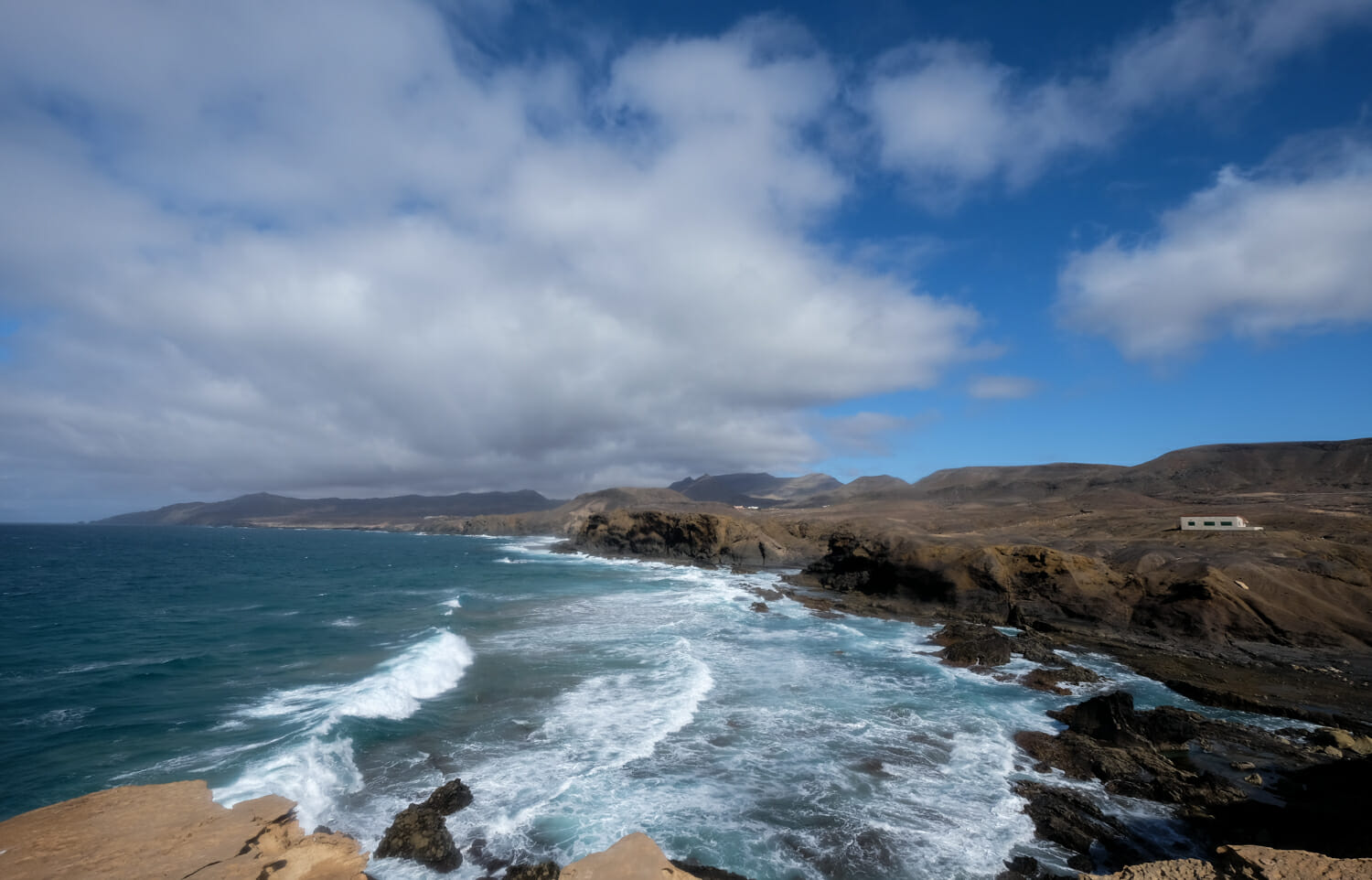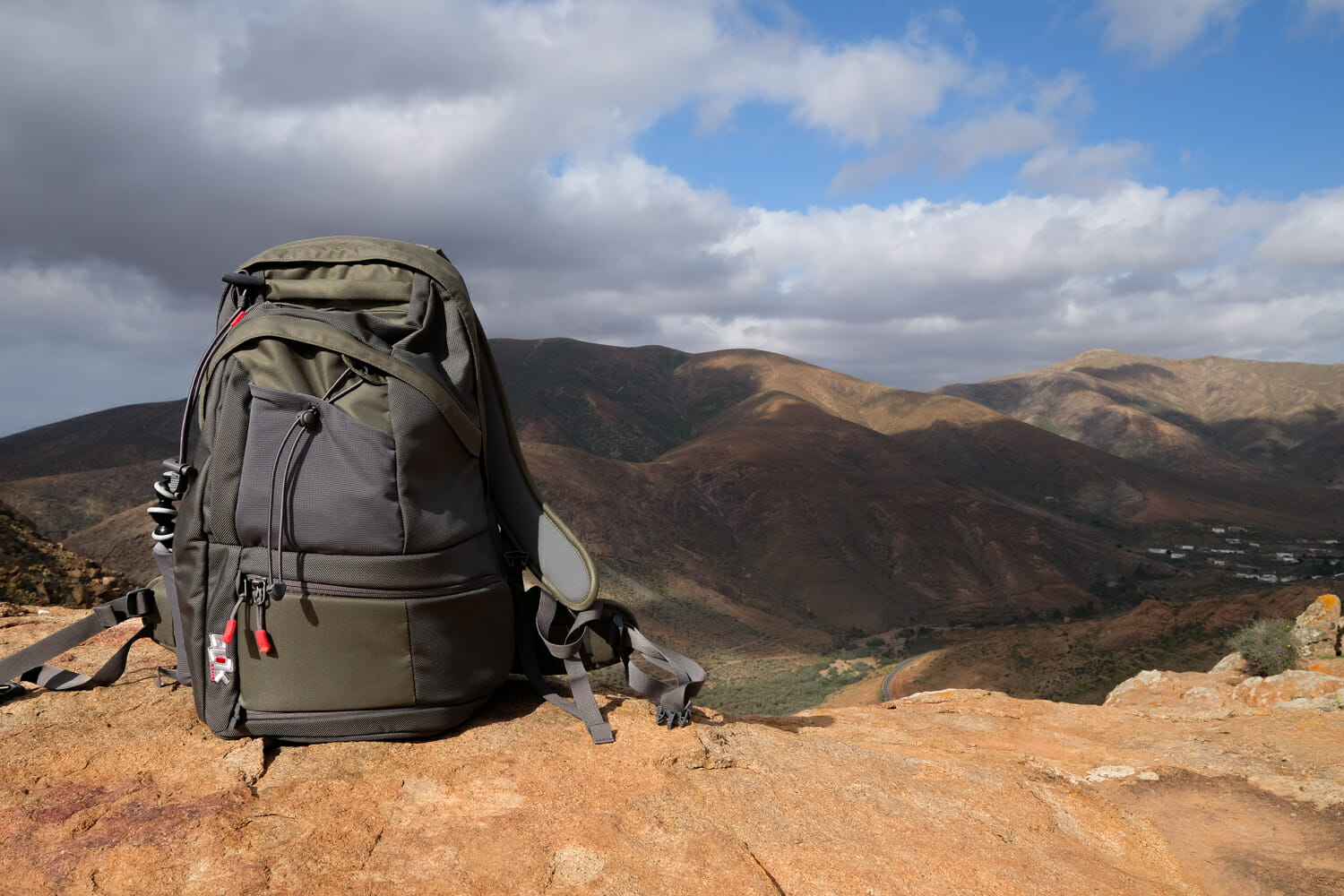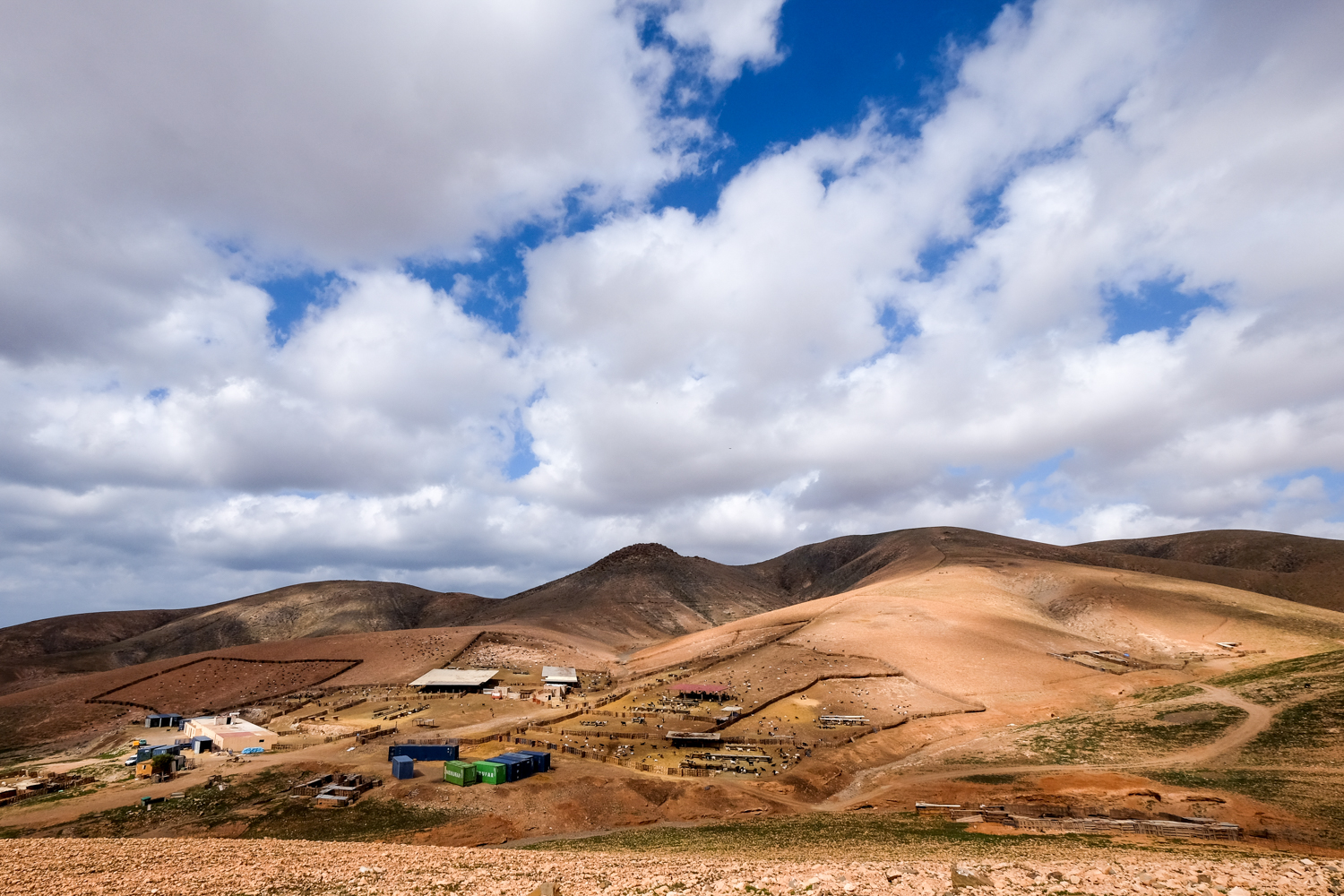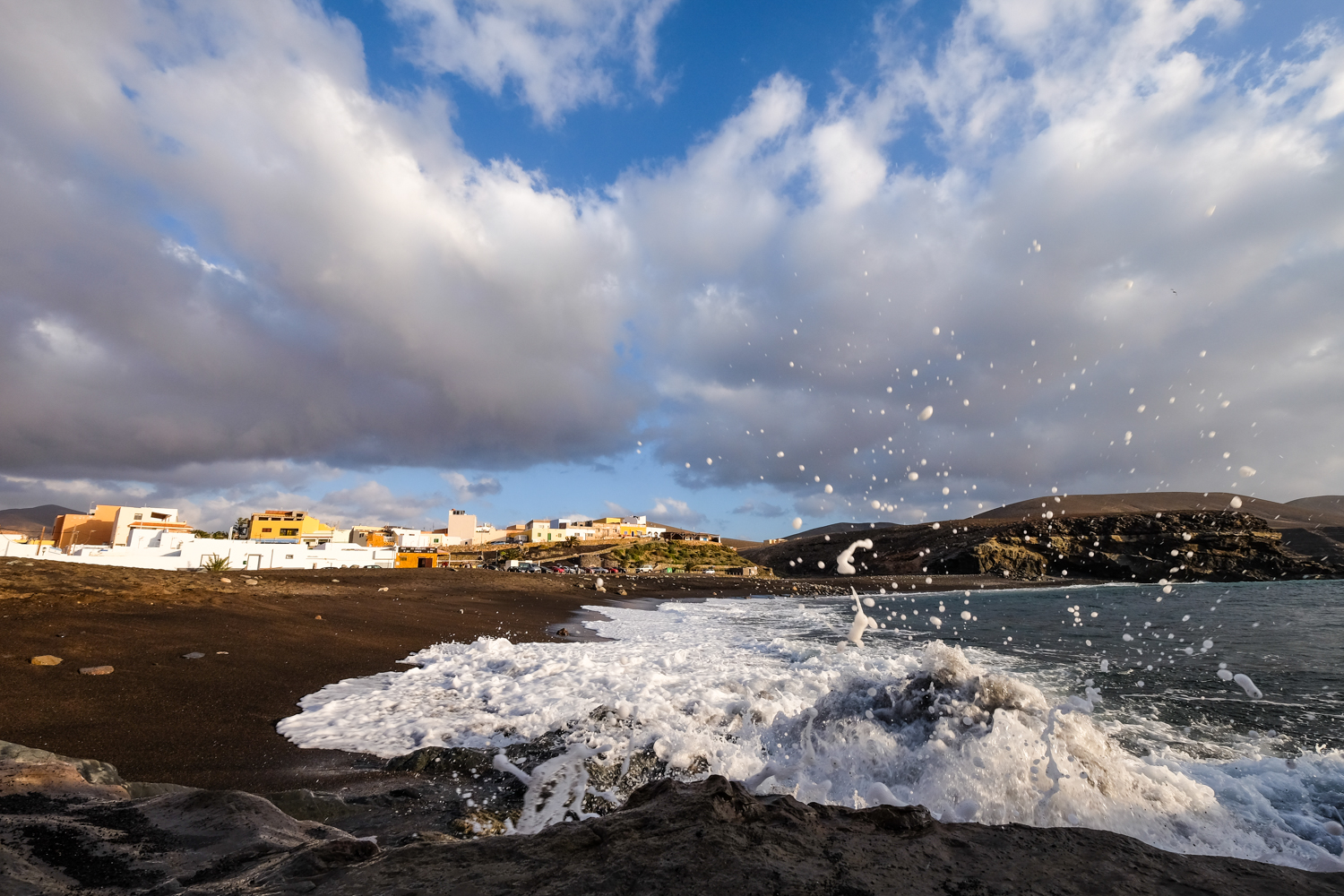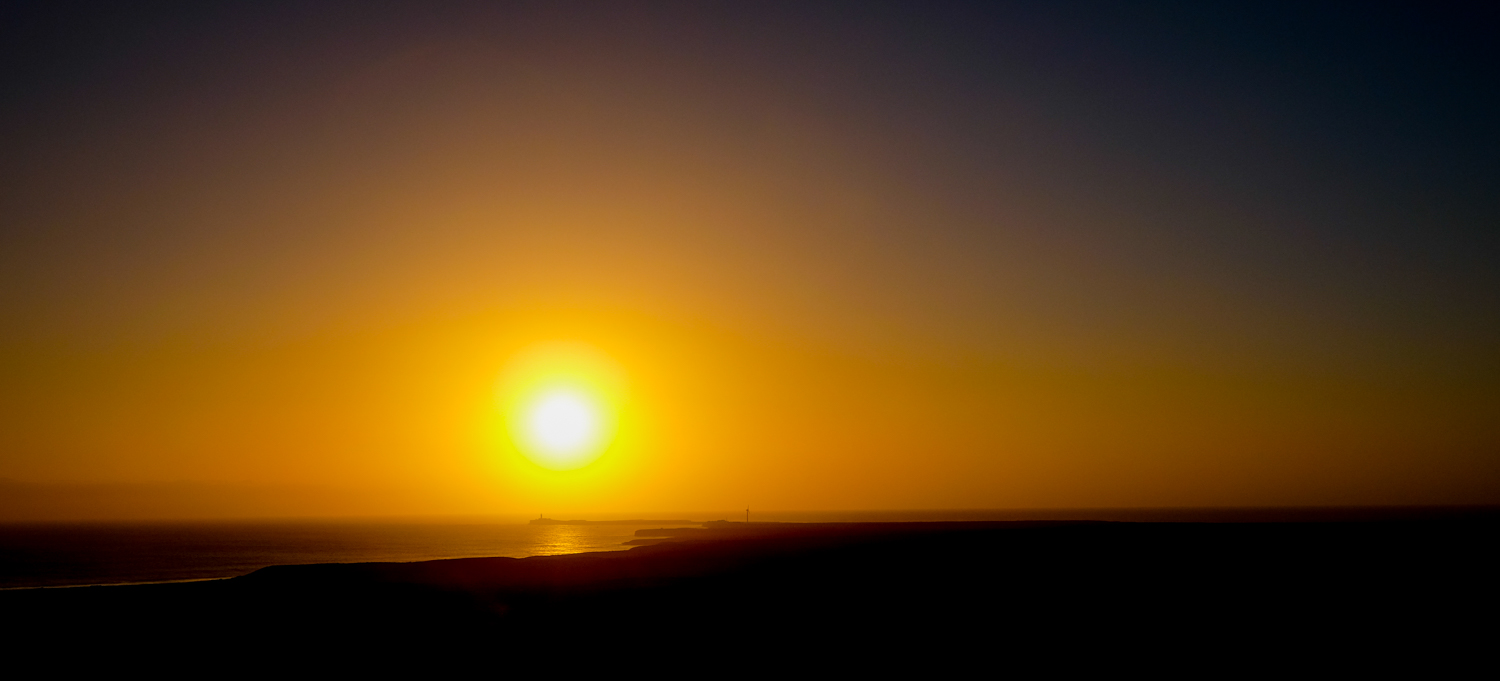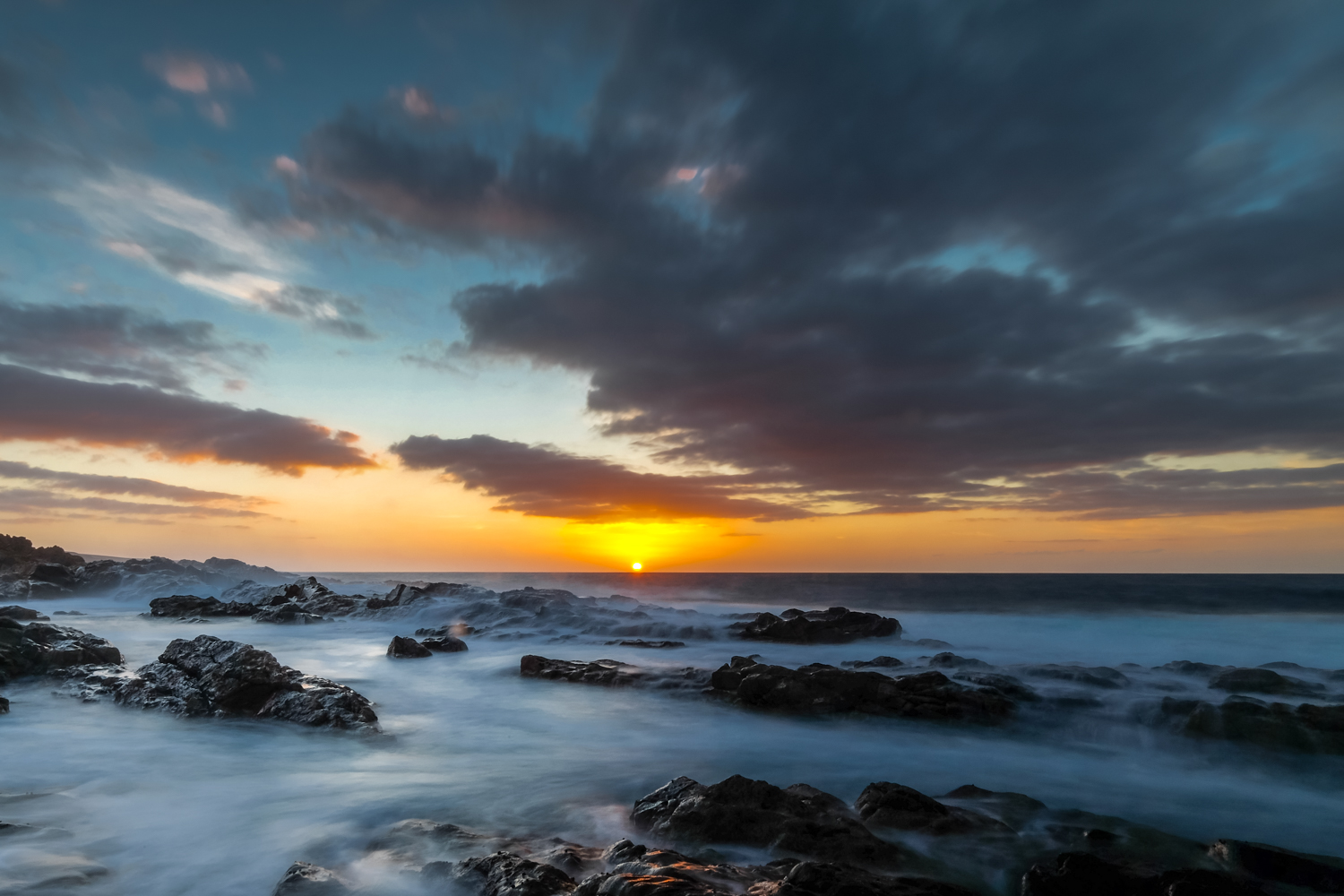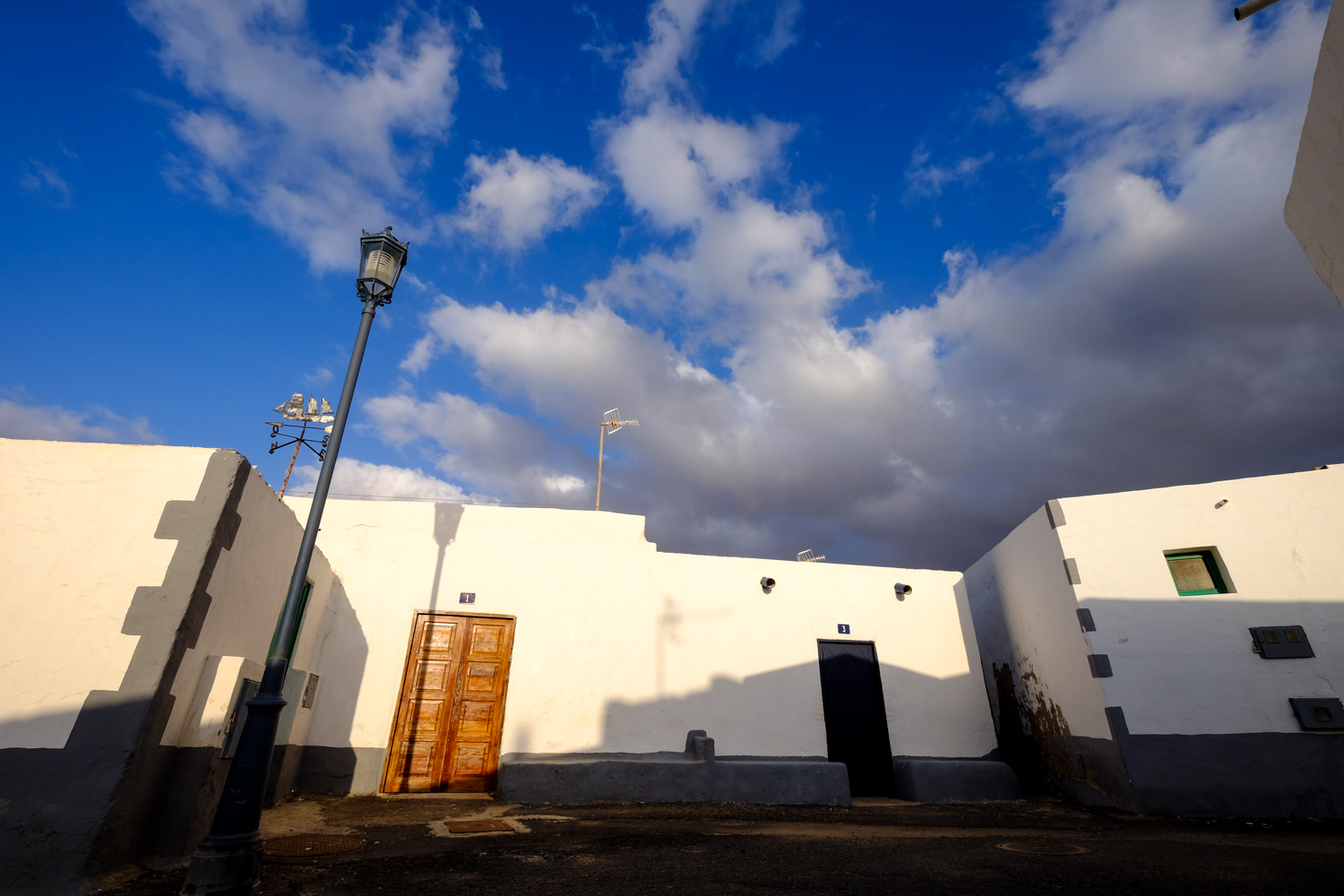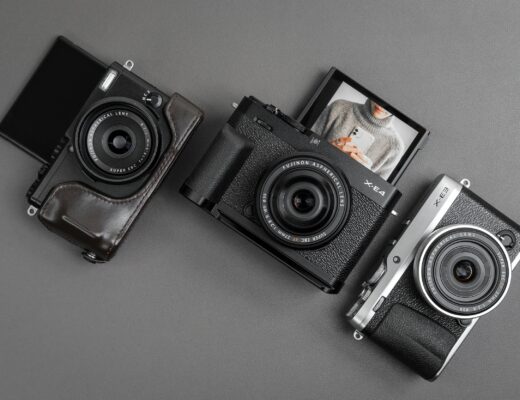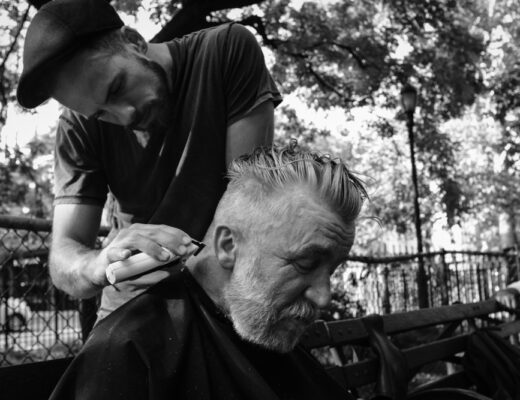As a landscape photographer, it is always tough to choose what equipment to take along on a trip. My last trip was with my Clik Elite Contrejour 35 packed with photo equipment, filter holders, glass filters, tripod, batteries etc. My favorite lens the 14-24mm f/2.8 which I never leave out, despite its enormous weight. Though, constantly walking on beaches and climbing cliffs with a load of 16 to 18 kg on your back, can be just too much, especially in a warm country. Is there an option? Yeah, sure, lighter and smaller equipment with almost the same quality can do the trick.
Last year I worked with the X-T1 and the XF18-55mm for a few months. I really had to get used to it, especially after having the experience of a full frame camera. Working with an optical viewfinder compared to an OLED (digital) viewfinder was an immense challenge. The big change was a clear view with hardly any lag. In the evening, it gives a clear shot. When switching back to DSLR you have to get used to this change again. If it’s dark outside you will see this in the viewfinder too. I used the X-T1 with the standard XF18-55 mm on various projects, i.e. from studios to landscapes and photography shooting.
After a few weeks I got so connected to this camera that, when I realized that the camera had to be returned to Fujifilm, it was foolish of me to get that much attached. And I didn’t feel like returning it. In the end I fell for the option to switch over on to the X-system with some help from FujiFilm Netherlands. The problem was a limited budget, and finding a lens that fulfills my needs.
When I was 17 years of age I got my first camera a Praktica TTL 1000, with a 50 mm lens. I had to promise to work with this lens only, for about year. After that year I was allowed to buy other lenses. Now, this makes you focus on one camera/lens only and its possibilities.
Believe me, this method really works. You thoroughly get to know your camera and lenses that way. Now almost 33 years later I am still doing this, completely voluntarily. On my way with a X-T1 and a XF10-24 mm and an adapter for other brand lenses. I choose a Tamron 90 mm F2.8 lens, for this trip to the Isle of Fuerteventura.
As standard equipment, I always have a set of NISI filters with me. A variable ND Filter the ND and GND filters for the skies. To work with filters it is wisely recommended to use a tripod. To properly and safely carry everything I use a Clik Elite Probody Sport-CS, I received this bag from Globell.com the new dealer for Europe.
The new version Sportsbag also has a sleeve for a 15 “laptop. The advantage of a relatively small backpack is that you check in and out of flights and don’t get picked out of the line for an extra check because of the size of the luggage.
With my big and heavy DSLR equipment I got picked out from the queue every time. But this time there were no hazards because I was packed lightly. The backpack is large enough to fit a X-T1 and three lenses in the camera bay. You can easily access the camera during walking. There is also a compartment for other materials like clothes, food, extra gear etc. Another big advantage is the Hydration compartment it fits a 3 liter hydrapack. So for a real sportsman this is great, for a photographer with a dog, like me. We have water for both of us. I used many brand backpacks in my professional career, finally I find the Clik Elite bags and backpacks the best. It is very good quality and designed by photographers. Most of the other brands design nice packs with lots of things you do not need.
The night flight to Fuerteventura was a great opportunity to test the light sensitivity of the X-T1 and the XF10-24. The lens has a built-in image stabilizer which means you still can take a shot under poor lighting conditions free from the hand. By setting the ISO to 6400 and the largest possible aperture a picture could still be taken with 1/15 of a second. This will not be pin-sharp but for a report this is sufficient. The viewfinder also gives a good clear picture when it is dark. This is a huge advantage over a DSLR with optical viewfinder. The downside is only when it’s very dark then there will be a lot of grain in the viewfinder image, then setting focus by hand becomes a disaster, especially if you use the “High Light peaks” focus. I am convinced that this will improve greatly in the future and then users with prime lenses and manual focusing will also focus well under poor light conditions. Q [quick menu] can be set for the ‘noise’ reduction at high ISO NR.
After a perfect landing, yes, otherwise I could not write this right now, escape the crowd, pick up the rental car quickly to explore the island, and get away from the terrible Caleta de Fusta. This is one of the popular areas where you will not encounter anymore of the original area. The houses have given way to Pubs, discos, Casinos and fast-food restaurants. And to make matters worse only English tourists are present. I have nothing against England but if I want a Full English breakfast, eat Fish and Chips with a pint of beer, I’d rather go to London. Now, In the South of the island there are generally many Germans and in the North various nationalities of tourists. Unfortunately, there are only a few authentic coast villages the average tourist isn’t coming. The first impression of the island landscape was not overwhelming; it’s dry, bald and has a huge amount of lava fields and remains of volcanoes, which of course is natural for a volcano island. The island is relatively close to Morocco, the climate is pleasant and it rains rarely. There is always a Wind about and that is the major culprit. There is a lot of moisture and salt brought by the wind in the air. This results in a contrast empty misty background. A UV filter does not do the trick here but, a GND- or Polarization filter can improve its clarity slightly.
It was therefore important to be at the right time of day to take pictures and to take into account how to compose the shot. Certainly, with an ultra wide angle.
But fortunately, there are almost always clouds that mute the sunlight and give more contrast and depth to the photo. By waiting for the right time when the Sun pricks through the clouds, depth and color will emerge in the photo. With the large picture angle of a 110 degrees (10mm) the sky gets a dramatic effect. By using a relatively small aperture everything turns out nice and sharp. Because I work in RAW I leave out options such as dynamic range and film simulation, because I’d rather do this manually during the RAW edit.
For JPG, there are different standards then you need to put settings. As a landscape photographer I always work in the BKT setting, this is: automatic bracketing for the lighting exposure. The camera then automatically makes 3 pictures with different exposures for example – 2/3, 0, + 2/3. Practice learns that usually a slightly underexposed photo gives better results, especially with clouds in the shot. When the camera is set on the A setting, the shutter speed will be adjusted, and set on the T aperture is adjusted.
The XF10-24 F4.0 is a typical wide-angle lens, it’s hard to create depth-of-field with minor focus, even when you use the widest opening. By ensuring that the subject within the minimum focus distance of 50 cm is, there may be a beautiful sharpness and depth of field created.
To make the background more fuzzier, try focusing before the subject. By choosing the “AF Field”, Q [quick menu] button, the focus field can be moved with the selector button. Another way is to tilt the camera and then focus by the AE-L button. The same effect will be seen.
Using a wide angle there will always be distortion, the better the lens (read more expensive) the less distortion. This also applies to the color rendition and sharpness. How does this lens feel, can you easily adjust the focusing or aperture? Does the zoom work well, not too rough or too light? Is the lens still pleasant to hold despite the relatively heavy weight of half a kilo? But, do you hear me complain? No, my old one weighed over a kilo.
The XF10-24 performs best between Aperture f8 and f16. And the autofocus is extremely fast. Because of this, you also get good action shooting. Hmm, landscapes and action? Yes, that is for sure, just look at the picture of the splashes.
During the sunset, the last light fell on the splashing water. By taking an extremely low position to take the shot, in combination with the 10 mm focal length, it creates a dynamic picture with much depth. It is a great advantage that the X-T1 is excellently dust- and waterproof. Especially, here on the coast with stormy days. The XF10-24 standard is also sealed against dust and moisture. If you work under more extreme circumstances, it is important to look out for lenses with the encoding WR (weather resistant).
Fujifilm is well known for its good color reproduction. What else would you expect otherwise if you’ve always been the market leader in analog films, everybody knows the Astia, Provia and Velvia. This know-how is processed in the camera to display the colors as beautiful as possible.
At the southern tip of the island a beautiful lighthouse arises. I had already planned to make shots of this scenery by sunset. Little did I know that you have to drive about an hour long on dirt roads alongside cliffs and volcanoes to get there. And then just almost too late to see the sun setting, or preferably spoken sinking in the sea. This was because the evening light glorified the volcanic landscape in its splendor. Finally one more time without moisture in the air.
and in retrospect it turned out to be the most beautiful sunset of the trip. And compared to what I’m used to, it actually wasn’t bad at all. The picture is almost two stops underexposed, this is needed with a sunset. In this way you get beautiful bold colors. Then heading back it was again the same way driving the dirt roads in the dark, not really a road for wimps. Afterwards, it turned out that we were not at all allowed to drive on the dirt roads with the rental car. Who cares, I got my picture .
I’m not a wildlife photographer, I find wildlife beautiful to look at, but, somehow, not to have them printed hanging on the wall. There are shots that I make of a landscape which might enhance a beast or two. In Fuerteventura we only saw many goats, sheep, gulls and the occasional Bald Eagle. Oh yeah and those pesky squirrels who eat candy out of your bags, before you know your camera bag empty. A nice moment to use the Tamron 90 mm with a Kipon N/G-Fx adapter to try out. Autofocus does not work with this adapter, after much puzzling I found out that you must make an adjustment in the menu “shoot without lens”. The focus need to be changed to “Focus peak Highlight”. In the viewfinder then can be focused on the contrast between light and dark. You have to get used to it, but it goes perfectly. Only in low light conditions then it works bad, to much noise in the viewfinder. The noise looks the same as the high lite peaks. A solution is to change the color of the high lite peak. The result with the Tamron 90mm is a sharp photo with a nice bokey in the background. The new firmware 3.0 improves the viewfinder a lot.
Fuerteventura is an island where you travel to especially to make the most beautiful sea-landscapes. Away from the tourist areas and main roads there are many dirt roads scattered over the island, which will lead you to the most beautiful sceneries.
When you drive 15 minutes further from the beach, then you will find yourself standing on a mountain top with views over the island. An enchanting area is the North-Western coast where many kite surfers can be found. When the sun sets you can contemplate a beautiful spectacle of light and water. By using a variable ND filter you can get more drama and lighting effects in your picture, because the exposure time is longer. In this case, 5 seconds.
In the North and the South you will find huge dunes. They differ enormously from each other. In the North there are the beautiful sand-colored dunes and in the West they seem older and more compact, almost like real mountains. In general at daytime, there is too much (harsh) light to make good pictures, therefore we did the most photography in the morning and evening.
The XF10-24 is equipped with an image stabilizer, in low light conditions it is still possible to make pictures without a tripod. I managed to make pictures with 1/15 sec. The dynamic range of the sensor has improved for the best, compared to the older x-trans sensor, as shown in the photo of the village. The white walls against the blue cloudy sky. In black and white this is even quite spectacular. The dynamic range in this picture is very high and there are still details in the high lights.
For us it’s more difficult to choose; which photo do we like? Color or black and white? I leave that up to you guys.
If you want to see more pictures of this beautiful island please check out my website. You will find the photos under “Portfolio”.

